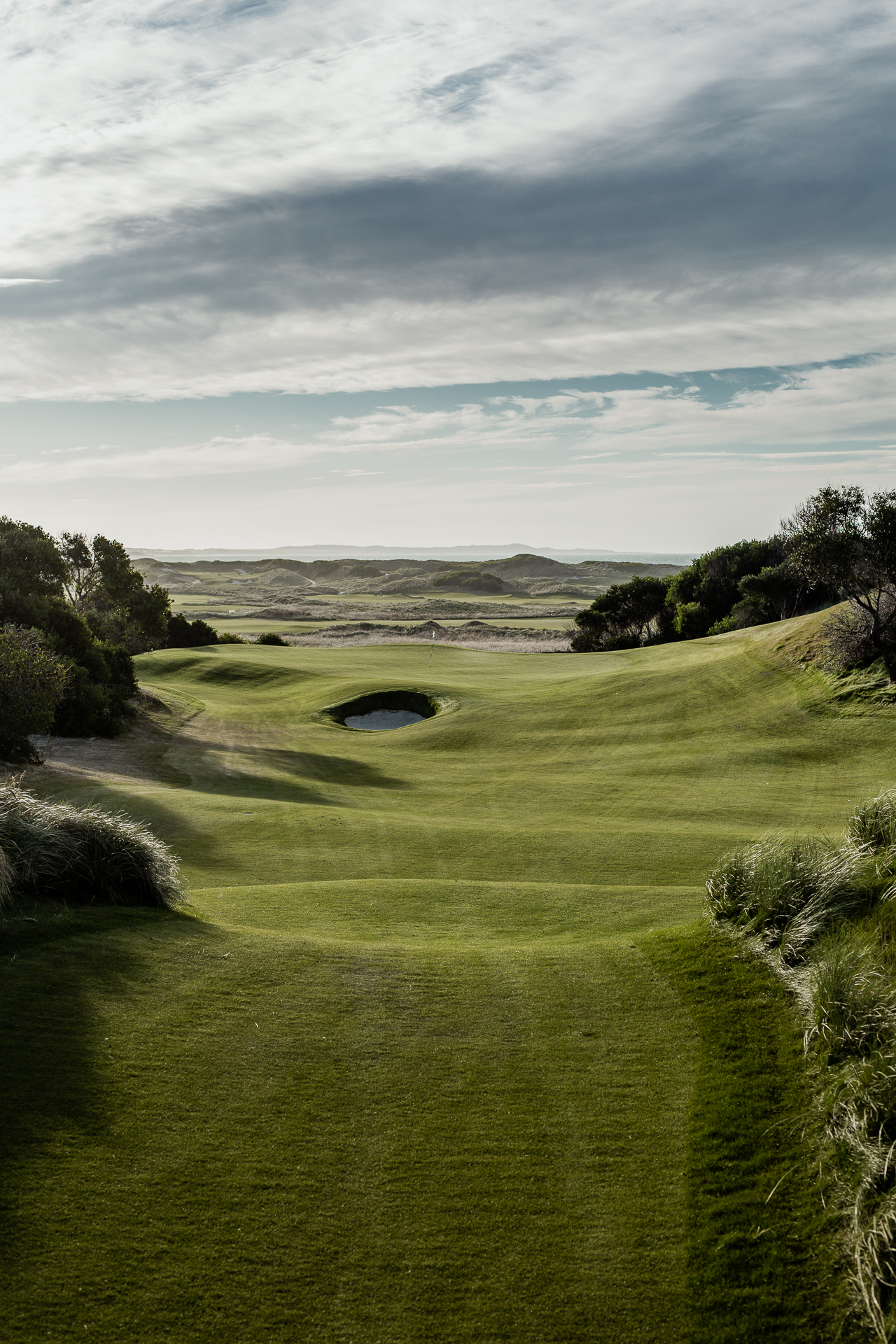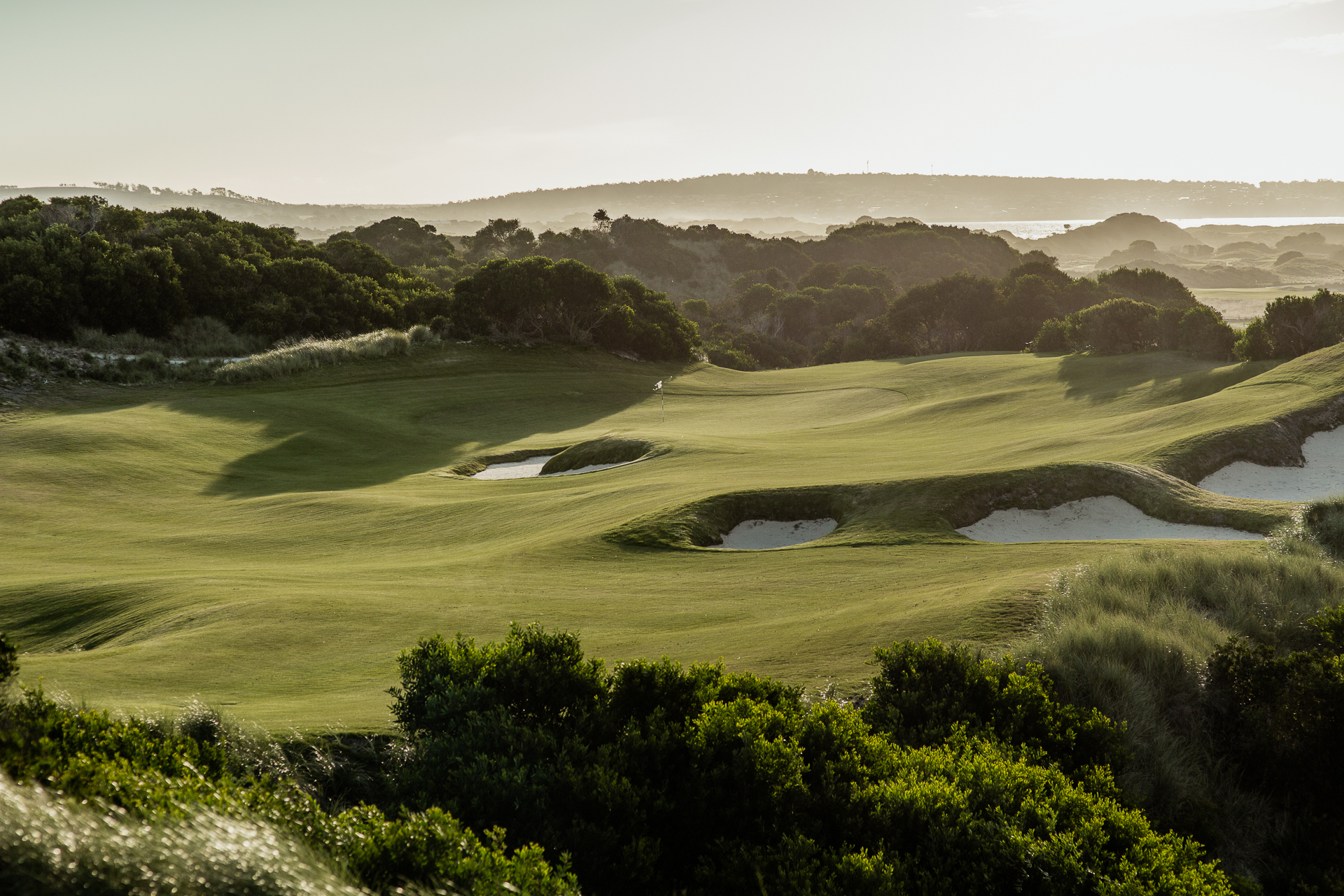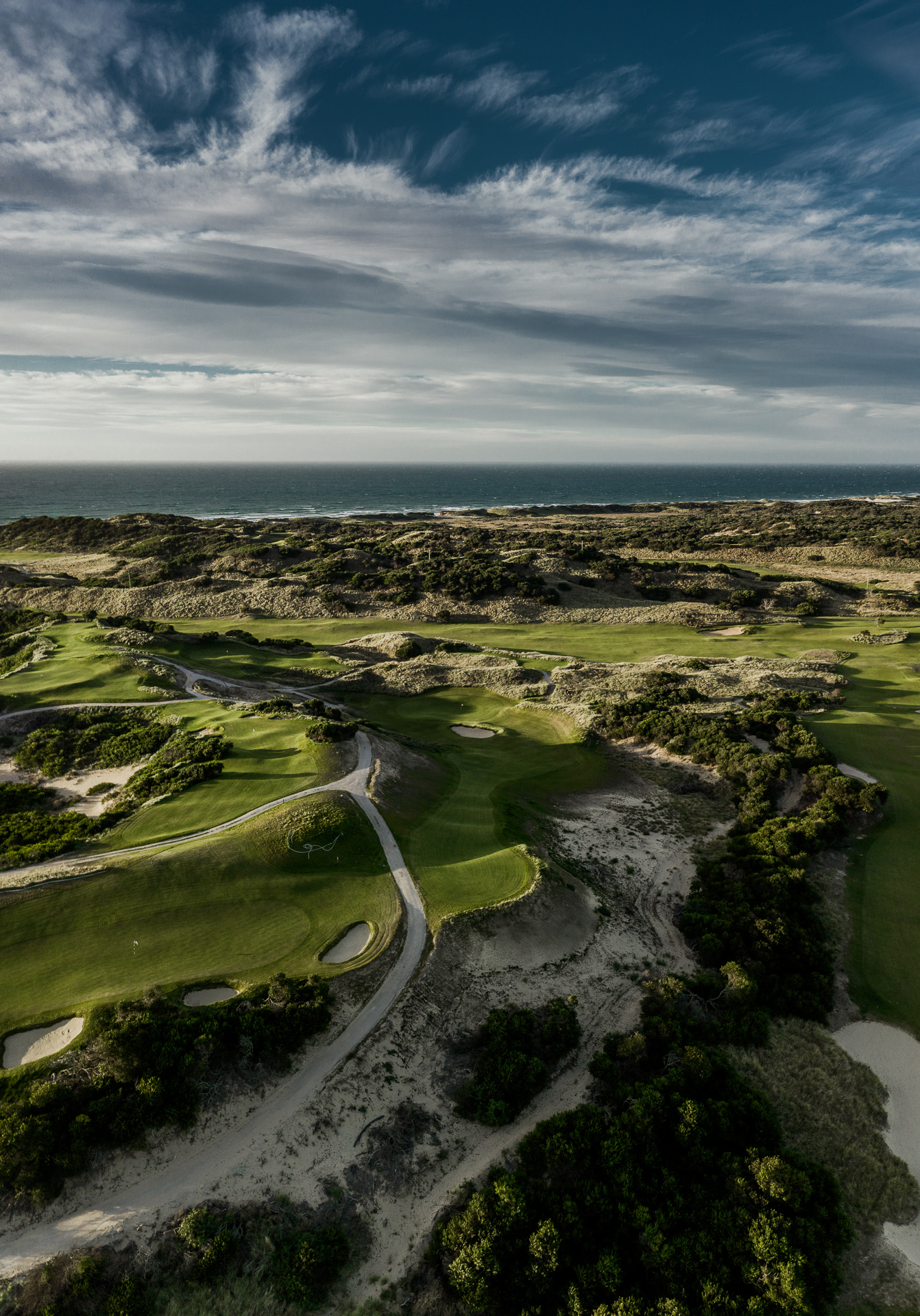Spoken by Bill Coore:
If you have really interesting sites to work with, we try to do something that takes advantage of the contours you’re given, but also do something that looks like it belongs on those sites. And to me, Bougle Run, just, boy, it ticks those boxes. Check, check.
When we were laying out the course at Lost Farm, I remember walking and looking at the big dunes above our eighth hole and thinking, “Boy, those are dramatic. They’re spectacular.” So I ventured up a few times up there to walk about. They were so beautiful, so spectacular, but also very severe. And just felt like the land forms up there were severe enough but packed in enough that it was going to be very difficult to build regulation type holes on those without, quite frankly, destroying them. We were going to have to bulldoze them or alter them so much to make longer holes. That just felt like, that’s not our goal. That’s not what we’re coming for. So I was certainly aware of those big dunes up where the upper part of Bougle Run is. So when it came time and Richard said, “We’re thinking about doing a par three course,” and I think he knew as well that was one of the most dramatic, visually spectacular, parts of all of Barnbougle Dunes landscape, all included. And so it was pretty easy to come to the conclusion, that’s where the par three course should go.





